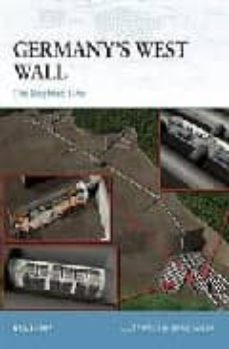Imprescindibles
Más vendidos Libros más leídos eBooks más leídos Todos los libros Todos los libros Autores destacados Series y sagas
Recomendados Libros recomendados Autores destacados Libros que inspiran Vidas con historia LGTBIQ+ English books
Ficción
Literatura Contemporánea Estudios literarios Clásicos Cuentos Poesía Teatro Libros de bolsillo Sagas literarias
Géneros literarios Novela romántica y erótica Novela negra Novela histórica Narrativa fantástica Novela de ciencia ficción Novela de terror Narrativa de humor Narrativa de viajes
No Ficción
Ciencias y tecnología Biología Ciencias Ciencias naturales Divulgación científica Informática Ingeniería Matemáticas Medicina Salud y dietas Formación Idiomas Estilo de vida Libros de Cocina Guías de viaje Narrativa de viajes Deportes Libros de Juegos Manualidades
Humanidades Autoayuda y espiritualidad Ciencias humanas Derecho Economía y Empresa Psicología y Pedagogía Filosofía Sociología Filología Biblioteconomía Estudios filológicos Estudios lingüísticos Estudios literarios Historia y crítica de la Literatura
Infantil
Juvenil
#Jóvenes lectores Narrativa juvenil Clásicos adaptados Libros Wattpad Libros Booktok Libros de influencers Libros de Youtubers Libros Spicy Juveniles Libros LGTBIQ+ Temas sociales Libros ciencia ficción Libros de acción y aventura Cómic y Manga Juvenil Cómic Juvenil Manga Shonen Manga Shojo Autores destacados Jennifer L. Armentrout Eloy Moreno Nerea Llanes Hannah Nicole Maehrer
Libros de fantasía Cozy Fantasy Dark academia Hadas y Fae Romantasy Royal Fantasy Urban Fantasy Vampiros y hombres lobo Otros Misterio y terror Cozy mistery Policiaca Spooky Terror Thriller y suspense Otros
Libros románticos y de amor Dark Romance Clean Romance Cowboy Romance Mafia y amor Romance dramatico Romance dramatico Romcom Sport Romance Otros Clichés Enemies to Lovers Friends to Lovers Hermanastros Slow Burn Fake Dating Triángulo amoroso
Cómic y Manga
Novela gráfica Novela gráfica americana Novela gráfica europea Novela gráfica de otros países Personajes, series y sagas Series y sagas Star Wars Superhéroes Cómics DC Cómics Marvel Cómics otros superhéroes Cómics Valiant
eBooks
Literatura Contemporánea Narrativa fantástica Novela de ciencia ficción Novela de terror Novela histórica Novela negra Novela romántica y erótica Juvenil Más de 13 años Más de 15 años Infantil eBooks infantiles
Humanidades Autoayuda y espiritualidad Ciencias humanas Economía y Empresa Psicología y Pedagogía Filosofía Historia Historia de España Historia Universal Arte Cine Música Historia del arte
Ciencia y tecnología Ciencias naturales Divulgación científica Medicina Salud y dietas Filología Estudios lingüísticos Estudios literarios Historia y crítica de la Literatura Estilo de vida Cocina Guías de viaje Ocio y deportes
NEIL SHORT
Recibe novedades de NEIL SHORT directamente en tu email
Filtros
Del 1 al 3 de 3
Crowood 9781847973672
Tank Turret Fortifications traces the origins of the idea from the development of the first armoured turrets in the nineteenth century through to the present day. On the way it covers the inter-war period when the first turrets were used in this way, the Second World War, when tank turrets were used on every front in the European Theatre of Operations, and the post-war period, when tank turrets were used even more widely. The book also details the decline of the idea as countries reassessed the threats they faced and slowly dismantled all their fixed fortifications. Widely used during World War Two and since, tank turret fortifications deserve a history, and Neil Short has spent several years writing this, the first proper study.
Ver más
eBook
OSPREY PUBLISHING 9781841766782
The West Wall (or the Siegfried Line as the Allies called it) played a crucial role in the bitter fighting of 1944 and 1945 in North-West Europe. Constructed in the period immediately after the remilitarisation of the Rhineland in 1936, the Wall stretched for 300 miles from Cleve in the north to the Swiss Border and consisted of some 14,000 pillboxes. The Wall initially blunted the US attack, and Hitler used it as a foundation from which to launch the Ardennes Offensive. This title takes a detailed look at the development and form of this key fortification, examining the principles of its defence in visual depth, and discussing its fate in the wake of the Allied onslaught.
Ver más
Tapa blanda
The History Press 9780752496092
Built by Nazi Germany between 1936 and 1938, over 500,000 workers were involved in its construction. This book gives a detailed historical background to the Siegfried Line, and a guide to what is left to see of it today. The line was not designed to thwart a full-scale offensive, but rather to delay any attack sufficiently to allow the German reserves to mobilise. In the phoney war (1939-40) it was effective enough to prevent the French from launching a pre-emptive strike when German forces were heavily engaged in Poland. Certain sections of the defences saw some of the fiercest fighting of the Second World War. Much has since been dismantled, but some still remains today. This, the first English-language guide to the Siegfried Line, is fully illustrated and will appeal to anyone interested in the rise and fall of Hitler and Nazism, or in the Second World War in general.
Ver más
eBook
Del 1 al 3 de 3





























